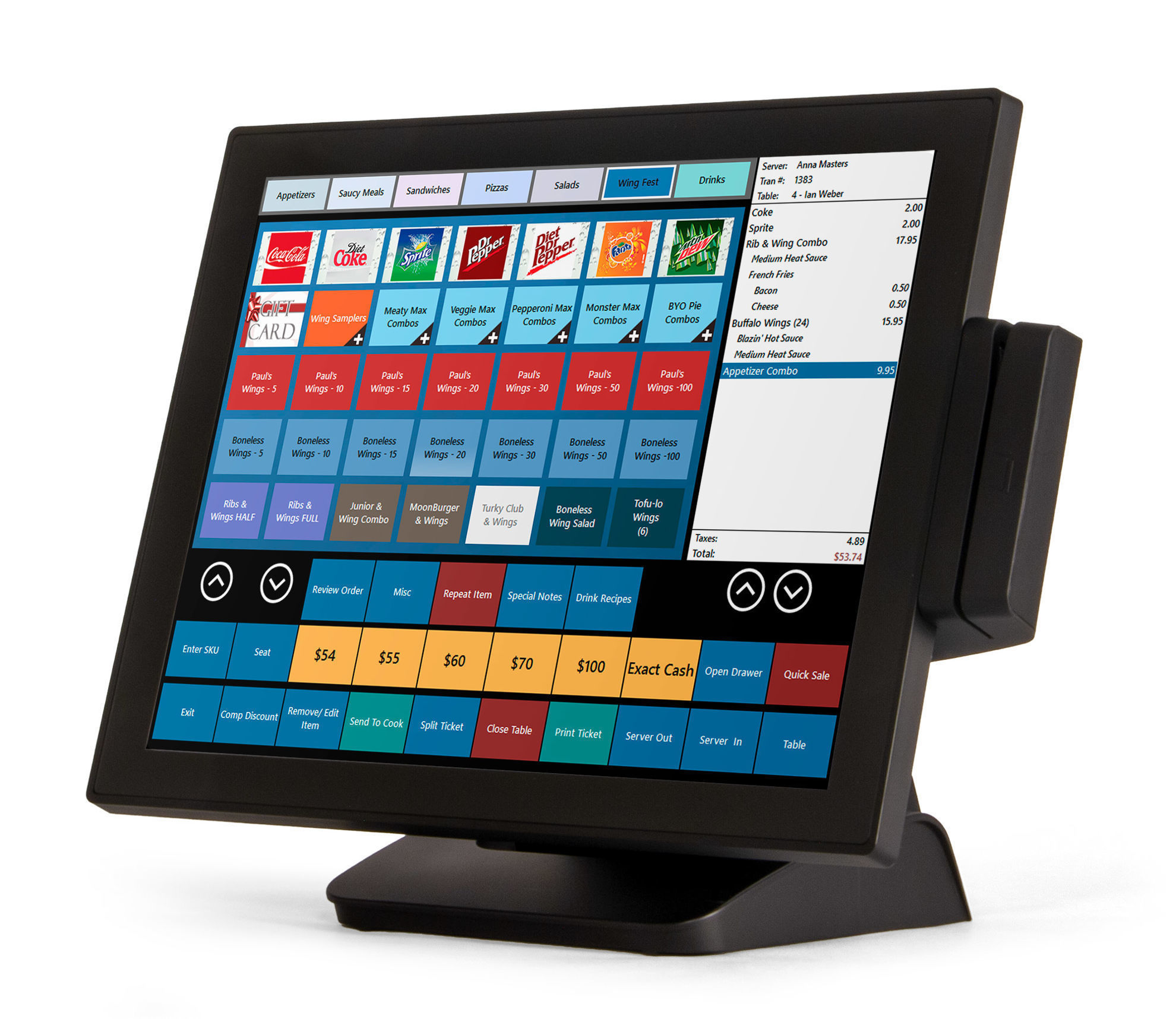How POS System Functions: A Comprehensive Guide for Entrepreneur
A POS system acts as an essential tool for modern-day organizations, integrating numerous parts to simplify procedures. It includes hardware like barcode scanners and software program offer for sale tracking. This system not only refines transactions but additionally manages supply and assesses client behavior. Understanding its capability can greatly influence a business's performance and decision-making. What are the crucial elements that add to this performance? Discovering these components provides useful understandings.
Recognizing the Elements of a POS System
A Point of Sale (POS) system is composed of several essential components that interact to assist in deals and take care of service operations. At its core, the equipment includes gadgets such as a money register, barcode scanner, receipt printer, and settlement incurable, all crucial for processing sales (Restaurant POS Software). The software application component takes care of stock, sales tracking, and client data, giving valuable insights for business decisions.Additionally, databases store deal records and customer information, ensuring data honesty and protection. Network connection allows real-time updates and accessibility to cloud-based services, enhancing functional efficiency. Interface, made for ease of usage, allow personnel to navigate the system swiftly, decreasing training time. With each other, these elements produce a cohesive system that streamlines the sales procedure, enhances customer care, and aids in reliable administration of service sources. Understanding these components is essential for entrepreneur seeking to enhance their POS systems
Just How Sales Purchases Are Refined
When a customer makes a decision to make a purchase, the sales purchase starts a series of organized steps within the POS system. Initially, the cashier inputs the products being bought, which are checked via a barcode reader or manually gone into. This action fetches product information, including prices and appropriate tax obligations, from the system's database.Next, the consumer exists with the complete amount due. The POS system then processes the repayment, whether through cash, charge card, or mobile repayment methods. For electronic settlements, the POS safely interacts with repayment processors to accredit and validate the transaction.Once the repayment is validated, the system generates an invoice, which can be printed or sent electronically. This invoice works as receipt for the consumer. The deal data is tape-recorded in the system, making sure exact sales documents and economic monitoring for the company.
Stock Administration and Monitoring
Efficient supply monitoring and tracking are important parts of a POS system, as they guarantee that organizations maintain optimal supply levels and minimize disparities. A robust POS system allows for real-time inventory updates, mirroring sales and returns instantly. This enables company owner to keep track of supply degrees properly, guaranteeing that preferred products are easily available while stopping overstocking of less prominent products.Additionally, progressed POS systems supply features such as automated stock notifies and reorder pointers, enhancing the purchase procedure. Barcoding and RFID innovation enhance precision in tracking supply movement, reducing human error. Extensive coverage devices provide insights into stock turn over prices, helping companies make educated decisions about purchasing and product offerings. Ultimately, reliable stock administration via a POS system not only boosts operational performance but likewise improves consumer fulfillment by making certain item accessibility.

Analyzing Client Information and Insights
Client data evaluation functions as a powerful device for services utilizing a POS system. By accumulating and analyzing transaction data, businesses can reveal useful understandings about customer behavior and choices. This analysis allows them to determine acquiring patterns, peak buying times, and preferred products, therefore educating stock choices and marketing strategies.Additionally, companies can sector their client base, permitting personalized advertising initiatives that accommodate specific demographics or buying routines. Comprehending consumer loyalty patterns also assists in developing targeted promotions and rewards programs.The information gleaned from a POS system can likewise disclose insights right into customer comments, enabling services to make informed choices regarding item offerings and find service renovations. Inevitably, leveraging consumer data efficiently can enhance the overall purchasing experience, foster customer fulfillment, and drive income growth.
Advantages of Implementing a POS System
Executing a POS system provides numerous benefits that can greatly boost company operations. To begin with, it simplifies deal procedures, lowering wait times and improving customer satisfaction. By automating sales processes, companies can lessen human mistake and assurance accurate record-keeping. Furthermore, a POS system supplies beneficial data analytics, enabling owners to track sales patterns and supply degrees in real-time. This insight sustains educated decision-making, aiding to maximize stock monitoring and advertising strategies.Moreover, several POS systems integrate with other organization tools, such as audit software program, streamlining economic management. Enhanced worker monitoring functions, such as tracking hours and performance, additional add to operational efficiency.Lastly, the execution of a POS system can bring about enhanced profits through improved consumer experiences and calculated insights, eventually promoting company growth and sustainability.
Regularly Asked Inquiries
What Kinds Of Organizations Can Profit From a POS System?

Exactly how Much Does a POS System Usually Price?
The price of a POS system usually ranges from a couple of hundred to numerous his comment is here thousand bucks, relying on attributes, hardware, and software - Restaurant POS Software. Companies should consider recurring fees for upkeep, support, and deal processing when budgeting

Can I Incorporate a POS System With Existing Software?
Incorporating a POS system with existing software application is commonly feasible. Several systems supply APIs or integrated compatibility attributes, permitting organizations to simplify procedures and enhance functionality by connecting different software applications effectively.
What Training Is Needed for Personnel to Utilize a POS System?
Educating for personnel to use a POS system typically consists of understanding software program functionalities, processing deals, handling stock, and taking care of client interactions - Restaurant POS Software. Practical presentations and hands-on session enhance proficiency and self-confidence in using the system properly
What Happens if the Net Drops While Making Use Of a POS System?
If the web goes down throughout POS system use, deals might be disrupted. Numerous systems supply offline abilities, allowing standard operations to proceed, but full capability, consisting of real-time stock updates, will be limited.